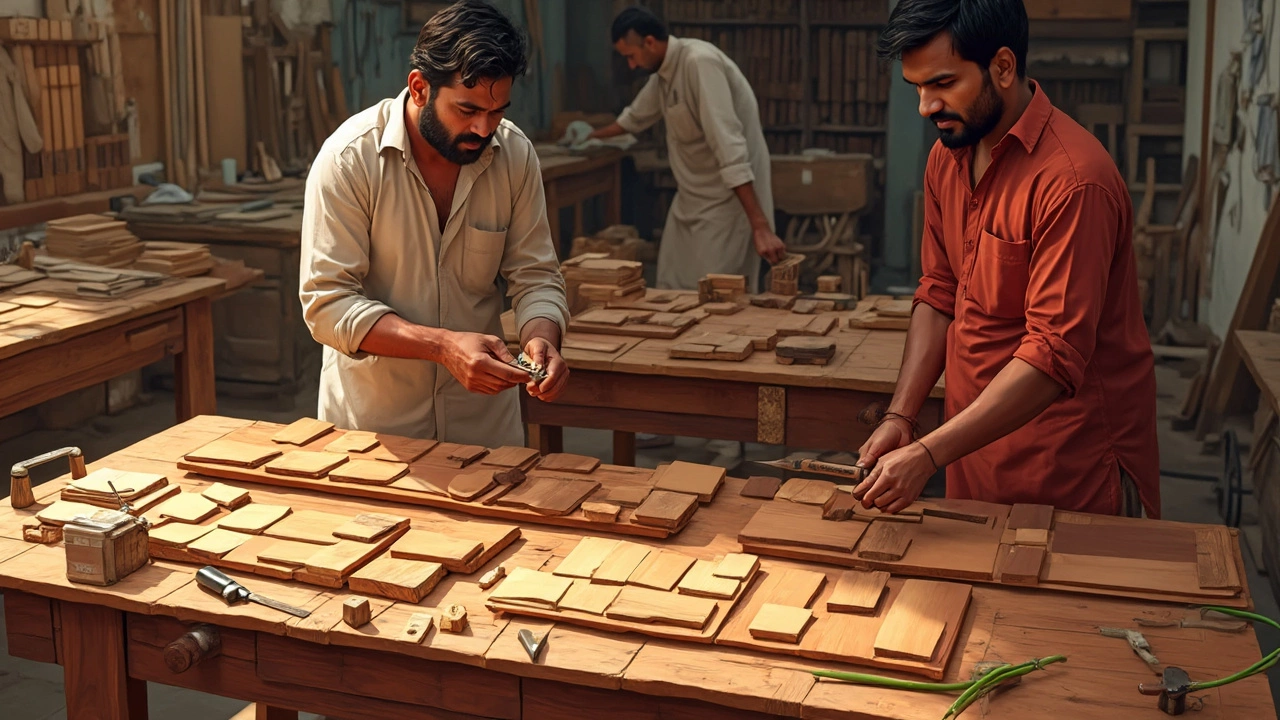Indian Wood Trees – What Grows, Why It Matters, and How to Use Them
Did you know a single teak tree can yield enough timber for a whole house? India’s forests are packed with trees that not only shape the landscape but also power a multi‑billion‑dollar timber market. Knowing which species thrive where, and how to handle them responsibly, saves money and protects the environment.
Most Important Native Species
**Teak (Tectona grandis)** – Grown mostly in Tamil Nadu, Kerala and the eastern hills. Its oil‑rich wood resists rot, making it perfect for furniture, decking and boatbuilding. A 20‑year‑old teak can weigh over a tonne, so plan for space and a strong crane if you’re harvesting.
**Sal (Shorea robusta)** – The backbone of central Indian forests. Sal is hard, heavy, and takes a deep, reddish hue when polished. It’s the go‑to for railway sleepers, heavy‑duty construction and charcoal production. Plant it on well‑drained soils; it doesn’t like waterlogged sites.
**Sandalwood (Santalum album)** – Famous for its fragrance rather than structural strength. Small, slow‑growing trees need a host plant to draw nutrients, so interplant with legumes or cashew. Harvest the heartwood after 15‑20 years for essential oil extraction.
**Mahua (Madhuca indica)** – Found in dry deciduous forests across central India. Its seeds produce oil for cooking and biodiesel, while the flowers are a sweet treat for local communities. Mahua tolerates poor soils and can be coppiced for continuous yield.
**Sheesham (Dalbergia sissoo)** – A fast‑growing hardwood common in Punjab and the Gangetic plains. The wood takes a rich brown finish, ideal for cabinets and turned objects. It thrives on riverbanks, so protect it from flood‑induced erosion.
Sustainable Harvesting and Market Tips
Harvesting any Indian wood tree should start with a forest management plan. Identify mature trees (usually 30 years for teak, 40 years for sal) and mark them for selective cutting. Use a reduced‑impact logging technique: cut from the side, skid with winches, and avoid damaging surrounding roots.
When selling timber, quality matters more than volume. Buyers look for straight grain, low moisture content, and clear knots. Get your wood certified by the Forest Stewardship Council (FSC) or the Indian Timber Certification (ITC) to fetch a premium price and open export markets.
Local processing adds value. Turn raw logs into planks, beams, or veneer close to the forest to cut transport costs and create jobs. Small‑scale sawmills can be set up with a simple hydraulic cutter and a drying yard; ensure the wood dries to 12‑14% moisture before sale.
Watch market trends. Teak prices spike when global furniture demand rises, while sandalwood fetches high rates during perfume season. Subscribe to industry newsletters and monitor export data from the Ministry of Commerce to time your harvest.
Finally, replant. For every tree cut, plant at least two seedlings of the same species or a mix of fast‑growing companions like neem and eucalyptus. This not only meets legal requirements but also secures a steady supply for years to come.

Best Tree for Furniture in India: A Practical Guide
Trying to figure out which tree makes the best furniture in India can get confusing with so many choices on the market. This guide breaks down the most popular types of wood used by Indian furniture makers, giving you practical info on their strengths, looks, and pricing. You'll learn what really matters when picking wood, plus pro tips to get sturdy, lasting pieces. If you want quality furniture or just want your next table to last more than a few years, this article gets you sorted. No confusing jargon—just facts, tips, and straight talk.
Read More